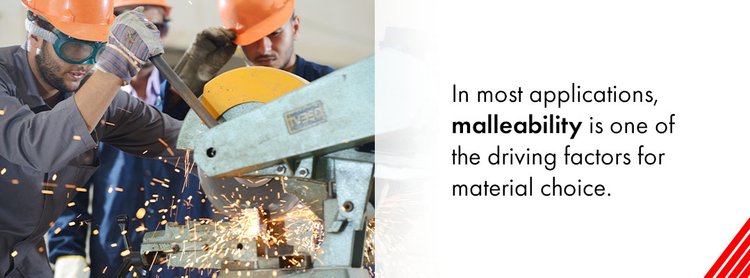The world is built with aluminum and stainless steel.
Whether you’re at home, work or out running errands, it’s impossible not to see products made with stainless steel or aluminum. Although they have a similar look, aluminum and stainless steel have different applications and performance capabilities due to their unique properties.
Understanding the main differences between aluminum and stainless steel can help you decide which metal is best for your project.
Aluminum vs. Stainless Steel
When deciding which material to choose, it’s important to evaluate the differences between stainless steel and aluminum properties so you can learn which is better for your project. Get a breakdown of their properties now:
STRENGTH AND WEIGHT
Aluminum is a lightweight material.
Stainless steel is heavier, weighing three times what aluminum does. The heavier weight of steel is an attribute to the strength of this material.
When deciding which material to use in your application, it’s important to consider both strength and weight. This factor is called the strength-to-weight ratio — which you calculate by dividing force per unit by density.
Aluminum is the ideal material when you need strength and lightness for your project. For this reason, aluminum is a popular component of airplanes and bicycle manufacturing. It’s also growing in use in the automotive industry — coming only second to steel.
Stainless steel is favored in car manufacturing, traditionally making up car exhaust systems, trims and grills. Stainless steel is also a common component of modern architecture and construction.
If weight isn’t a major factor for your application, and strength is the main concern, steel is a better choice because of its toughness.
CORROSION
Corrosion happens when certain metals and non-metals deteriorate as a result of oxidation. Rust is a type of corrosion that affects iron and its alloys.
Stainless steel includes chromium, which serves as a protective agent against corrosion.
When stainless steel begins rusting, the chromium layer shields the other elements so that the rust can get scrubbed away. The chromium shield renews itself to continue protecting stainless steel from corrosion.
Aluminum creates a passivation layer that helps resist oxidation and rust. However, it’s not invincible to other types of corrosion. When aluminum is anodized, a protective oxide layer is chemically built onto the surface of the metal, further protecting it.
If you’re looking for a rust-resistant material, go with stainless steel.
COST
For commercial purposes, aluminum and stainless steel get sold by weight.
When it comes to aluminum versus stainless steel and cost, aluminum posts a higher cost-per-pound than stainless steel. If you compare the volume of material received, though, aluminum is more cost-effective than stainless steel.
If you need a cost-effective solution for your specific application — and can use aluminum or stainless steel — aluminum is the better option because it will save you money.

MALLEABILITY
In most applications, malleability is one of the driving factors for material choice.
Aluminum is weaker than stainless steel, but when talking about aluminum’s workability, this property is an advantage as it makes the metal easier to shape. Aluminum is a soft metal, which is easier to cut, stretch and manipulate without breaking.
Stainless steel is the opposite. Due to its strength and resistance to wear and abrasion, stainless steel holds its shape making it more difficult to work with than aluminum.
If your specific application requires unique shaping, aluminum may offer a better choice because of its flexibility.
ELECTRICAL CONDUCTIVITY
Aluminum has some of the highest electroconductivity, which makes it great at conducting electricity — unlike stainless steel.
Since the use of aluminum in electrical applications is growing, it’s becoming more common to find aluminum in high- and medium-voltage overhead wiring as well as low- and medium-voltage underground cables.
Stainless steel is among the poorest electrical conductors of all metals. So if you’re looking for an alternative to copper for conducting electricity, aluminum is a great choice.
THERMAL CONDUCTIVITY
Aluminum conducts heat much better than stainless steel.
This property makes aluminum a common heat sink for applications that require heat to get drained away rapidly.
That’s why aluminum gets used for:
- Car radiators
- Air conditioning units
- Computer motherboards
- LED lighting
Stainless steel doesn’t conduct heat the same way aluminum does, which makes this property of stainless steel fantastic for applications that require high temperature strength.
That’s why stainless steel gets used for:
- Food processing applications
- Ovens
- Conveyors
If your application requires thermal conductivity, aluminum is the best choice because it can dissipate heat better than stainless steel.
WELDING
Stainless steel is relatively easy to weld.
Aluminum is quite difficult to weld and requires a certain alloy for the best welding capability.
For example, the following aluminum alloys are:
- 6061 aluminum alloy: This is well-known in the market and often gets used for machinery.
- 5052 aluminum alloy: This alloy features the best welding characteristics of other aluminum alloys and often gets used for general sheet metal work, as well as for aircraft.
When considering stainless steel or aluminum for a project that involves welding, the best choice is stainless steel. However, if you have other factors that point to aluminum, choosing the right alloy can ease the welding process resulting in the best product.
UNDERWATER ABILITY
Different types of aluminum alloy exist for different applications.
An advantage of 5052 aluminum alloy over stainless steel is its excellent saltwater corrosion resistance.
This property gives 5052 aluminum alloy the title of marine-grade aluminum. Marine-grade aluminum serves as a great material for workboats, combining both properties of weight and saltwater corrosion resistance.
In comparison, stainless steel is susceptible to corrosion in harsh marine environments. Saltwater attacks its protective chromium layer, as well as restricting it from reforming.
If your project involves a marine environment or saltwater, marine-grade aluminum alloy is your best choice.
Is Stainless Steel or Aluminum Better?
In the competition between stainless steel versus aluminum, who wins? That answer depends on your project and application.
The properties of aluminum and properties of stainless steel are vastly different, which means how your project turns out depends on the right choice.
Before choosing stainless steel or aluminum for your project, remember the properties of each metal before choosing one.
Whether you choose aluminum versus stainless steel depends on your environment, like dry versus wet, and your item’s applications, like storing cables or providing the framework for an aircraft.
If you’re looking for more information about using stainless steel or aluminum for your project, APX Enclosures can help.
With our National Electrical Manufacturers Association (NEMA) certified enclosures, your business can get aluminum or stainless steel enclosures customized to your unique location and needs. All our UL-Listed enclosures — and panels — include the UL/CUL Label, too.
Explore our custom enclosures now, or contact us online to talk about your aluminum or stainless steel enclosure project.




